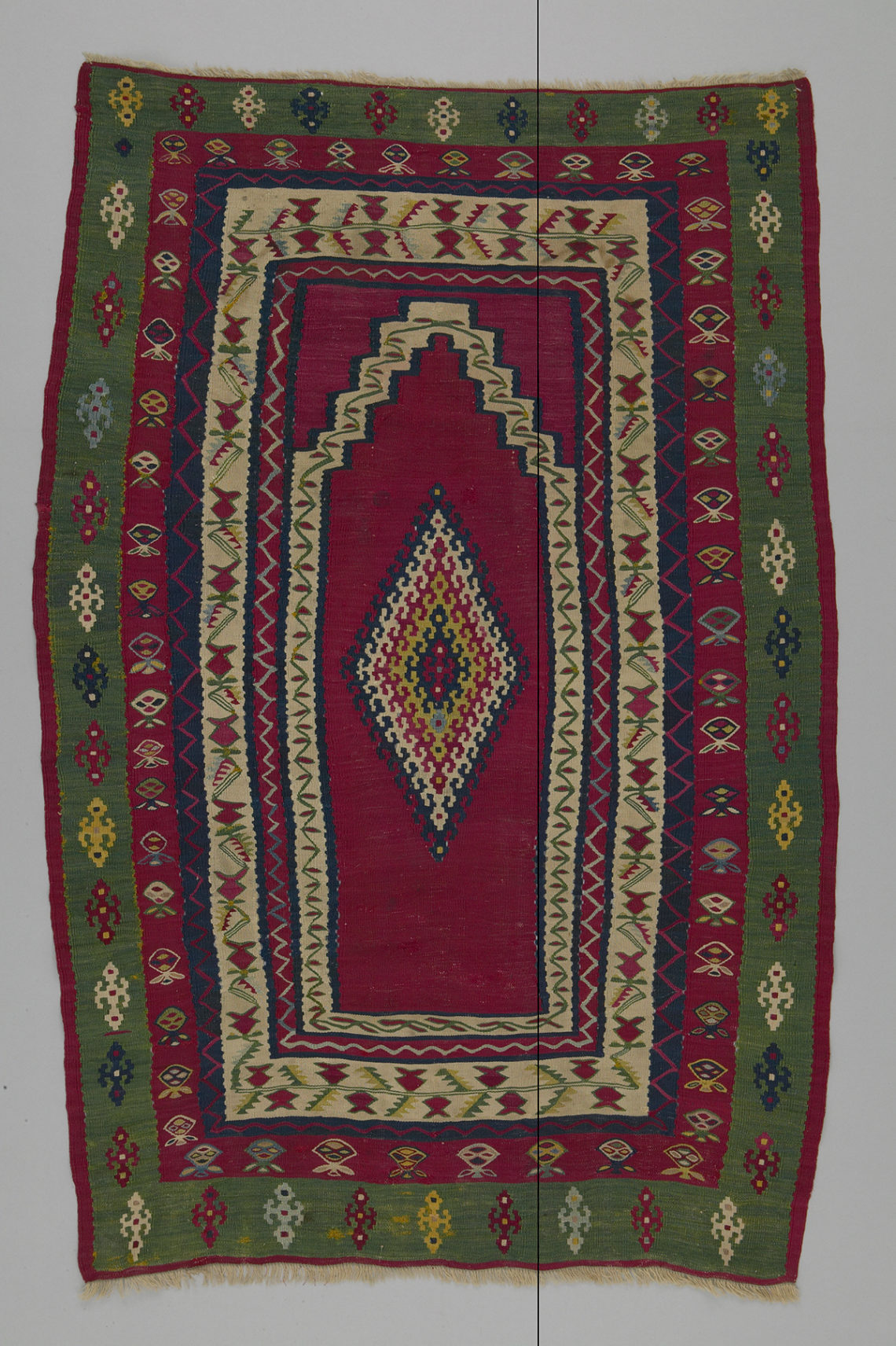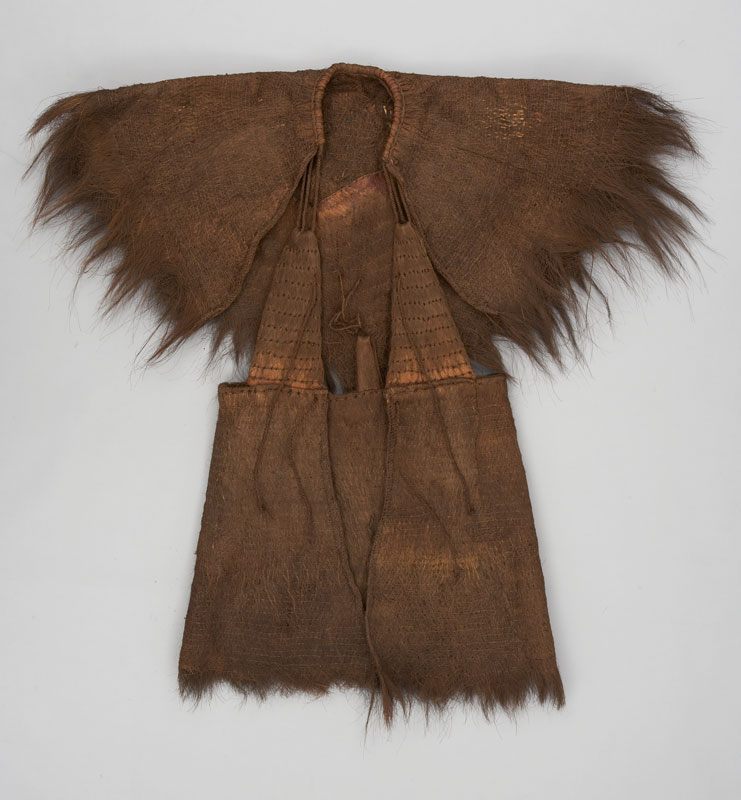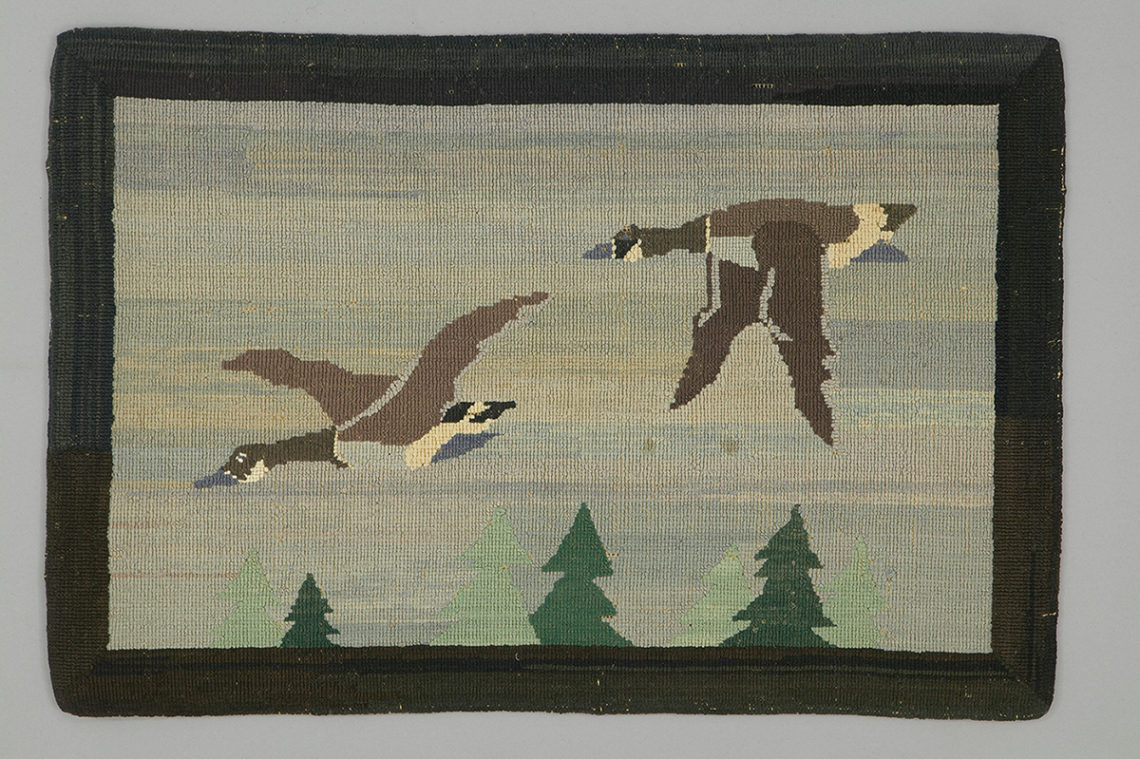Shawl, T87.0583
This week's Object of the Week is a silk shawl.
The intricate geometric and abstract designs of this shawl reflect the artistic principles of international Islamic culture that flourished in Morocco at the time when the shawl was made. Silk weaving in the famous workshops of Fez was a distinctive large-scale urban production and local silk fabrics, furnishing materials and shawls were exported to Europe, Asia and trans-Saharan Africa. The silks were woven in workshops on large draw looms operated by male weavers and assistants, who were organized and controlled by guilds. The draw loom’s mechanism stored several designs at once, so the operator could easily shift from one design to another on the same object. Elaborate patterns were inherited from the flourishing art traditions of Andalusia where Islamic cultural canons continued to persist after the end of Muslim rule on the Iberian Peninsula (1492). There is also a possibility that this shawl was produced in Andalusia itself.


